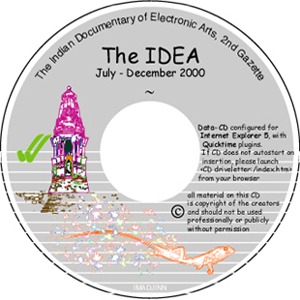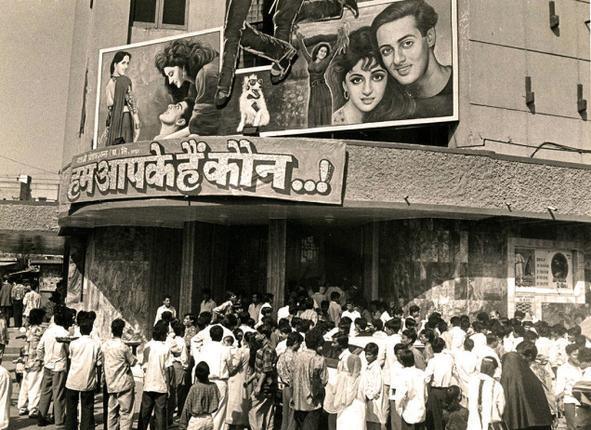Social Media
-
Social Media Research Workshop, November 06, 2015
Since March this year, short-term research fellows have been involved with The Sarai Programme, on themes that relate to digital and social media. On Friday, 6th November 2015, we are organising a workshop for the fellows to present and discuss their research with a select group of discussants. The workshop will be held at the…
-
Social Media Research Workshop, November 06, 2015
Since March this year, short-term research fellows have been involved with The Sarai Programme, on themes that relate to digital and social media. On Friday, 6th November 2015, we are organising a workshop for the fellows to present and discuss their research with a select group of discussants. The workshop will be held at the Centre for the Study of Developing Societies, 29 Rajpur Road, Civil Lines.
-
Item Numbers in the Digital Age: From Cinema to a Landscape of Techno-Tactile Sensations
This is the fourth and final research note from Silpa Mukherjee, one of the short-term social media research fellows at The Sarai Programme.
In my introductory post I referred to the new phenomenon of online citation culture built around item numbers as the item number effect.[1] Amateur digital culture spawned by social networking and micro-blogging platforms, and online platforms that encourage user generated content build an archive of virtual signage associated with the item number that now bleeds out of cinema and becomes more than music. Here I signpost the registers of a new fan identity which often curiously blends with the star’s…
-
Objects as Exhibits: Performance of the Forensic
This is the fourth and final research note from Pallavi Paul, one of the short-term social media research fellows at The Sarai Programme.
“Things are what we encounter, ideas are what we project.” ~ Leo Stein (A-B-C of Aesthetics, p44)
In his work the The Theory of Things, Bill Brown asks us to turn our attention towards the distinction between ‘Objects’ and ‘Things’. The difference between the two Brown argues, lies in the threshold between the “nameable and unnameable, the figurable and unfigurable, the identifiable and unidentifiable[i].” In other words the relationship between the two is characterized by constant tension and possibility…
-
Media Encounters of the Nineties Romantic Song
This is the fourth and final research note from Abhija Ghosh, one of the short-term social media research fellows at The Sarai Programme.
“I’m a child of the nineties. An era when Rahul Roy was the country’s biggest superstar for a while…I’ve also lived through a time when the average person’s only contact with the outside universe was through newspapers, the radio and one channel on the telly- a channel that you couldn’t even watch unless you went to your balcony and repositioned its antenna every now and then.”[1]
-
Making a Classification Choice for the Internet: Between the Visible Car Parts and the Invisible Pizza Delivery
This is the fourth and final research note from Smarika Kumar, one of the short-term social media research fellows at The Sarai Programme.
In the last post, I discussed the role classification plays in locating the internet as a subject of law. I reflected on how two very different, yet competing identities: an identity upon function, and an identity upon means, have been framed for the internet in the debate around Voice over Internet Protocol (VoIP) regulation in India. Once these competing identities have been framed, the question that looms is how law negotiates between the two? This post attempts to reflect on this question.
-
Khabar Lahariya’s Online Foray: Successes and Failures
This is the fourth and final research note from Mrinalika Roy, one of the short-term social media research fellows at The Sarai Programme.
More and more NGOs are joining the online bandwagon. I have mentioned the pros and cons of NGOs going online and the organisations helping them in this endeavour, in my earlier posts. Here, I look at how far going online helped Khabar Lahariya and whether they have been able to realise all they set out to do.
-
Imago Aevitas: Forms of Web based Art Projects
This is the fourth and final research note from Charu Maithani, one of the short-term social media research fellows at The Sarai Programme. This post looks at the various forms of distribution of web based projects starting from 2000, mapping the changing methods of reaching out and interacting with the users.
-
From Popular to Viral: The HAHK-DDLJ Media Swirl
This is the third research note from Abhija Ghosh, one of the short-term social media research fellows at The Sarai Programme. In mid 2014, a range of online film news content focused on two big blockbuster family romances of the nineties, Hum Aapke Hain Koun and Dilwale Dulhania Le Jayenge, marking twenty years since their…
-
Fielding Technology: Notes From Hinterland
This is the third research note from Mrinalika Roy, one of the short-term social media research fellows at The Sarai Programme. This is the third post of my project, where I look at the transformative affect that technology has had on the working of a rural newspaper Khabar Lahariya, thereby on the rural sphere and…






